SECRETS OF THE FUNFAIR
This article has been researched and written by project volunteer Pedro Ferreira.
Images are courtesy of Merton Memories Photographic Archive and are reproduced by permission of the London Borough of Merton.
The circus has a very long and rich history. Whether it’s clowns entertaining young kids or trapeze artists wowing an audience watching their impressive acrobatics the circus will forever be intertwined with travelling funfairs. Some will argue the circus is the funfair. However, this is not always the case and the entertainment listed below we associate with the travelling carnival can be seen without a circus tent needed. It’s also worth making the distinction that the travelling carnival is often small compared to fairs which are larger and sponsored by the state hosting it. Therefore this is an attempt to look at the history of the funfair from a wider angle. This article is a guide presenting a brief history of the funfair, specifically Mitcham Fair as well as the various attractions and entertainment over the years.
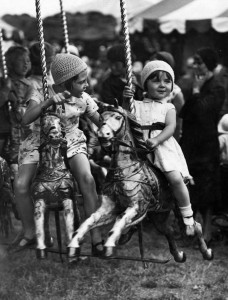
The Word “Fair” derives from the Latin “Feria” or Holiday, Feast, Festa. It was a typical word for celebration in countries such as Spain, Italy and Portugal. The travelling funfair (or travelling carnival) as we know it has its roots in traditional fairs dating back to at least the 1200’s. Early on the idea of a fair was seen as a place to buy and sell goods, to market to people with similar business interests. Even back then fairs were used as meeting places to interact with strangers or business associates. One of the earliest fairs for example was a sheep fair held at Weyhill, Hampshire. It wasn’t until the early 19th century the fair’s evolution to a carnival or funfair began, with fairs being dedicated more to entertainment gatherings, although to this day non-entertainment fairs still occur. Fairgrounds would present attractions including: waxworks, portable theatres, games of luck or chance, freak shows, wild beasts, boxing challenges, circuses, swings and roundabouts originally steam-powered before moving to electrical powered. The latter three attractions especially became synonymous with funfairs.
Mitcham Fair is thought to have a history dating back to Elizabethan times. Queen Elizabeth I visited Mitcham five times during the 1590s, as several of her courtiers lived there. During one visit, she is said to have been so delighted by entertainment, staged in her honour, on the village green (Upper Green), that she awarded a charter for an annual fair. This is said to be the origin of the event, but sadly there is no surviving evidence to prove it.
What archive material has been found is that the first Mitcham Fair has been running at least since the 18th century. The fair itself was criticised early on for encouraging gambling, illegal fly-tipping and general disorder.
By the 1900s Mitcham Fair was still greatly enjoyed but many changes were coming. From the 1930s onwards there was a grand opening with the Mayor of Merton driving in an open carriage (later replaced by the Mayoral car) from what we now call Vestry Town Hall to the fairground. There he or she would make a speech and raise aloft a large gilded wooden key (belonging to the Showmen who ran the fair) to symbolise the opening of Mitcham Fair, which would be followed by a mass scramble of local youngsters to nab the first “free” rides.
While the fair was always popular, the 1970s saw complaints of previous decades resurface, including theft and antisocial behaviour. The emergence of television and popular music also had led to complaints from those who found it all annoying. The cost of maintaining the fair (especially with years of bad weather) was also becoming too much to handle. The showmen boycotted having their fair open in protest over rent increases, so after 360 years of staging an annual fair, it closed in 1974. The loss of the fair was seen by many as losing a part of Mitcham’s culture, but thanks to some enthusiastic individuals and lobbying of Merton Council, the fair returned in 1983. Since then Mitcham Fair has continued to entertain generations who have attended, providing a community gathering for those wishing to have a special day out.
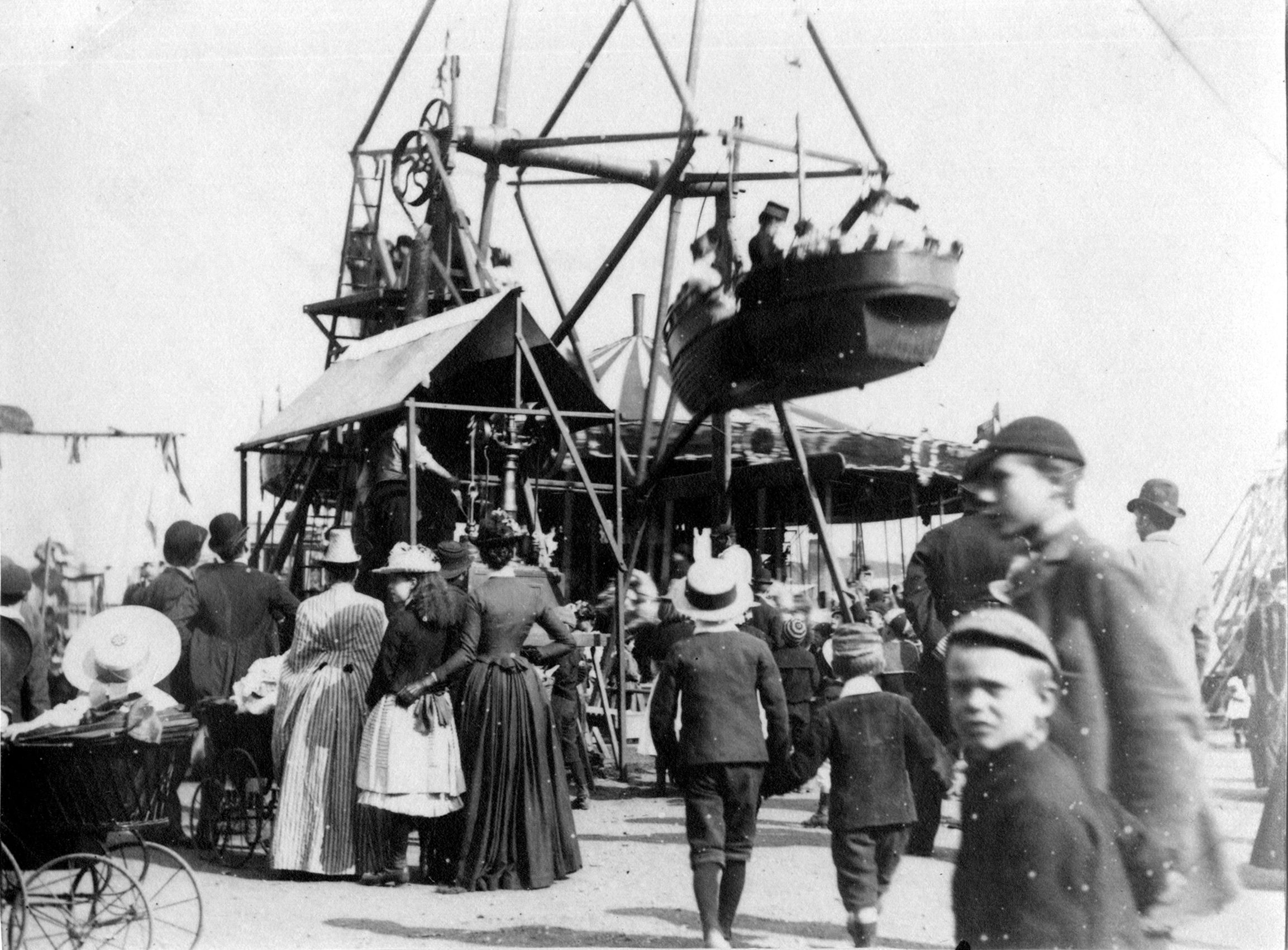
ELECTRICAL RIDES
In the 1860s agricultural engineer, Frederick Savage produced a steam-powered Roundabout. The ride was reconfigured a number of times but ended up a great success as the Gallopers Roundabout. Various configurations of the same stream-driven rides were soon made for fairgrounds such as the Steam Yachts, two giant swinging cabins attached to the steam engine at the centre.
The advent of electricity was more significant as larger rides could be built without needing steam to be imported to the fairgrounds. This ended up powering most if not all equipment used in travelling funfairs. Listed below are some of the electrical rides found at the funfairs.
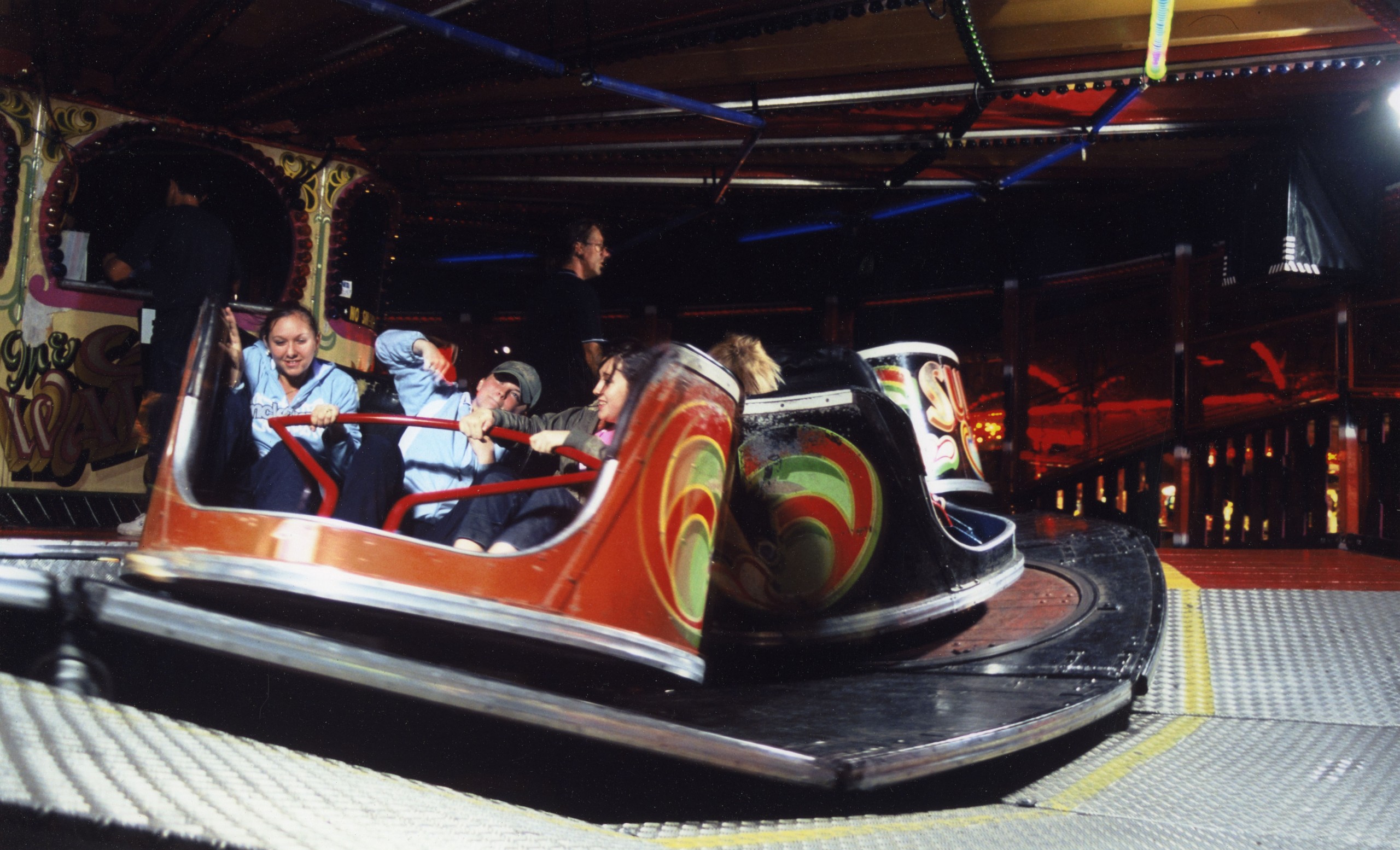
Image: Alan Hutchings, Mitcham Camera Club
Bumper Cars/Dodgems
A favourite of the fair dating back to the 1920s, the aim is to steer the oval coloured car you are seated in into other opponents thereby giving the driver a ‘bump’. Early versions were difficult to steer but over time improvements were made. Since their introduction various exterior design revisions have been made as well as technical revisions however for the most part the ride still consists of a pole attached to a wheeless car with the pole powered by electricity.
Helter Skelter
The Helter Skelter comes from the old adverb meaning “in confused, disorderly haste”. A popular ride that begins at the top of a tower with a curved slide leading down to the bottom. It was thought to have been first introduced in 1906 for UK’s Blackpool Pleasure Beach, however, the first recorded sighting of the ride was at the October 1905 Hull Fair. Over time variations of the framework have appeared yet the general design has always remained the same.
Carousel/Merry-Go-Round
Also known in the UK as a Roundabout, the ride presents a rotating circular platform with seats for riders that are shaped like horses. As one of the much older rides seen at a funfair originally it was used by Turkish and Arabian cavalry members to give horse riding lessons in the 12th century. Throughout the centuries the ride developed and changed until the first steam powered Roundabout by Thomas Bradshaw appeared at the Aylsham Fair around 1861. Interestingly, in the UK the ride rotates clockwise while in Mainland Europe and North America the ride rotates counter clockwise. Advancements soon followed with some rides replacing the horses with various small scale vehicles that pitched and moved while the person was seated inside. The longevity of the design has seen this ride endure for years and years.
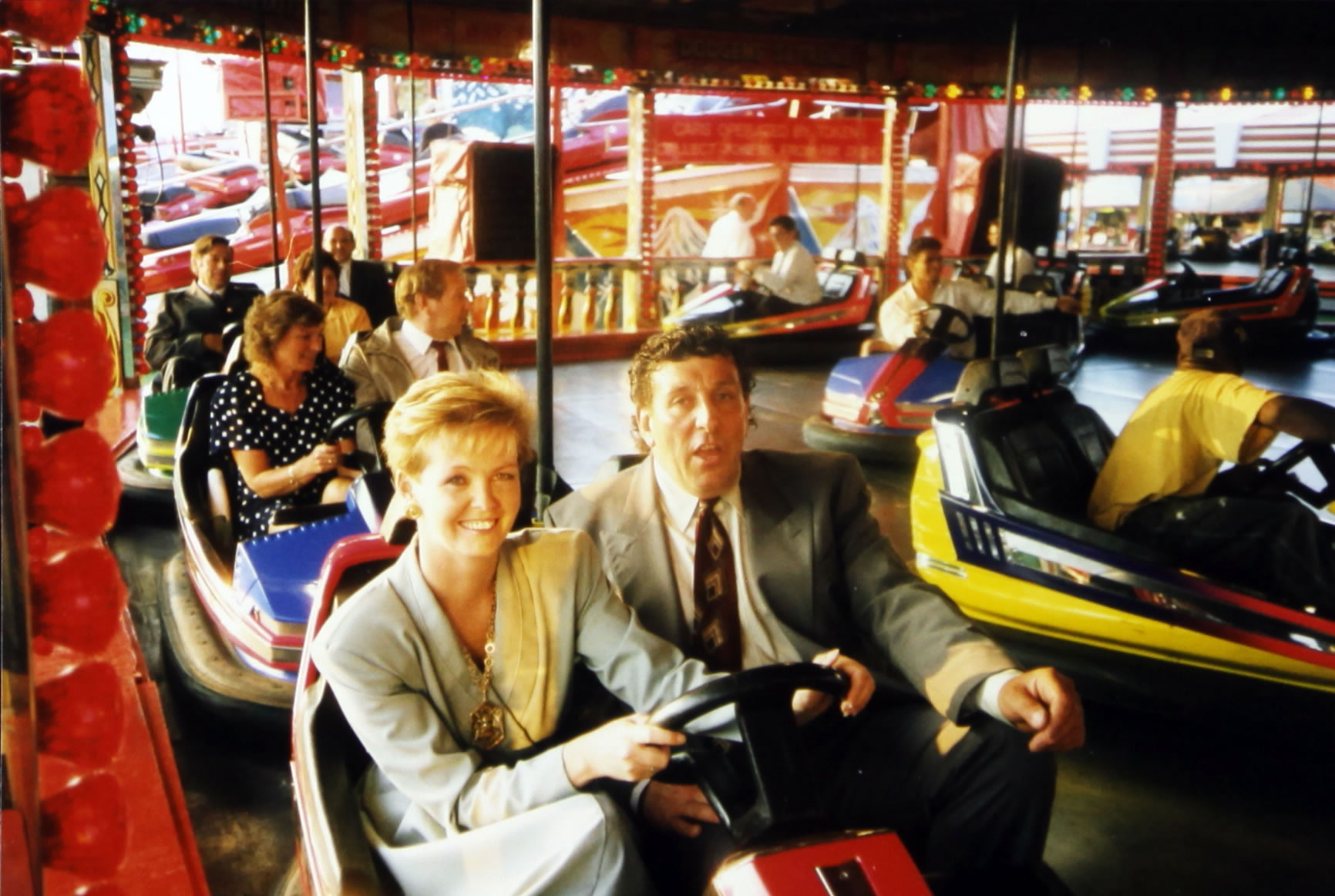
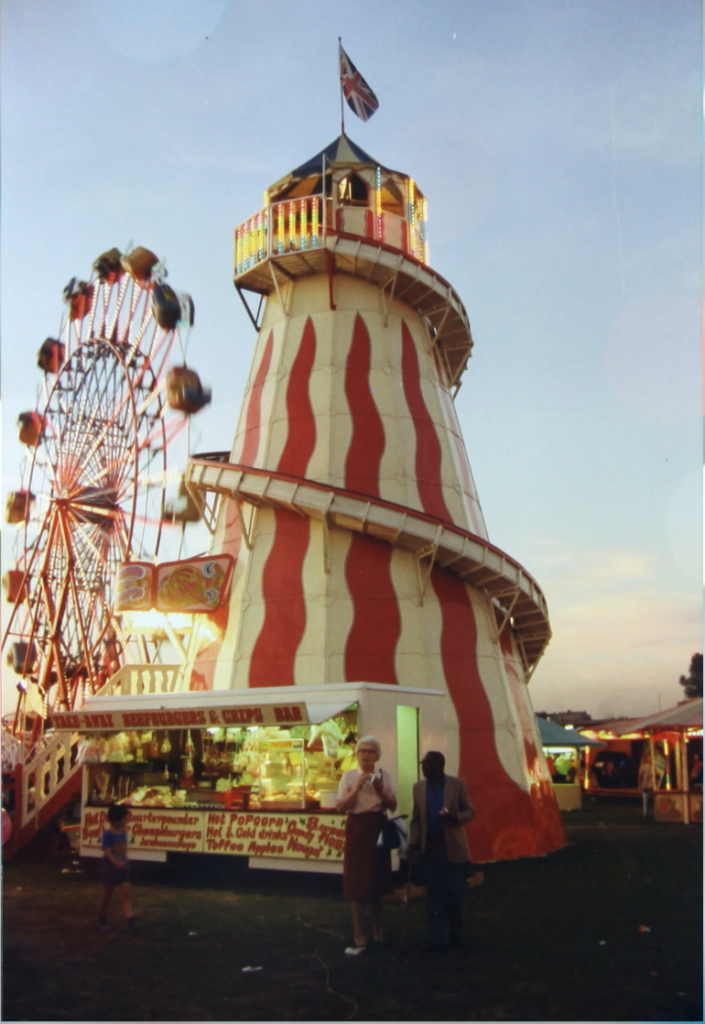
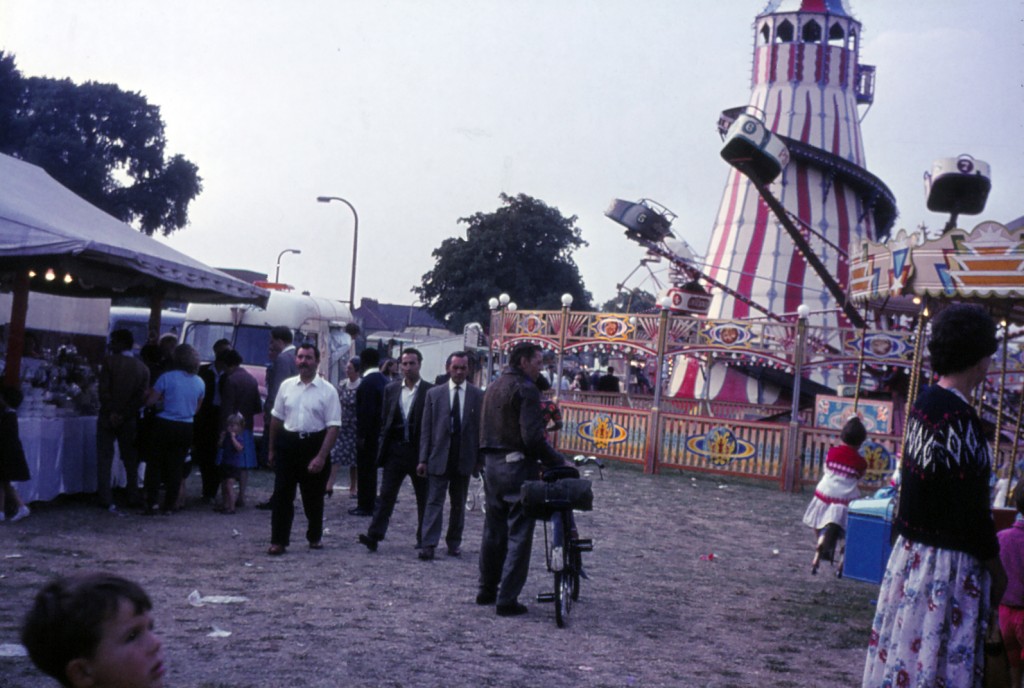
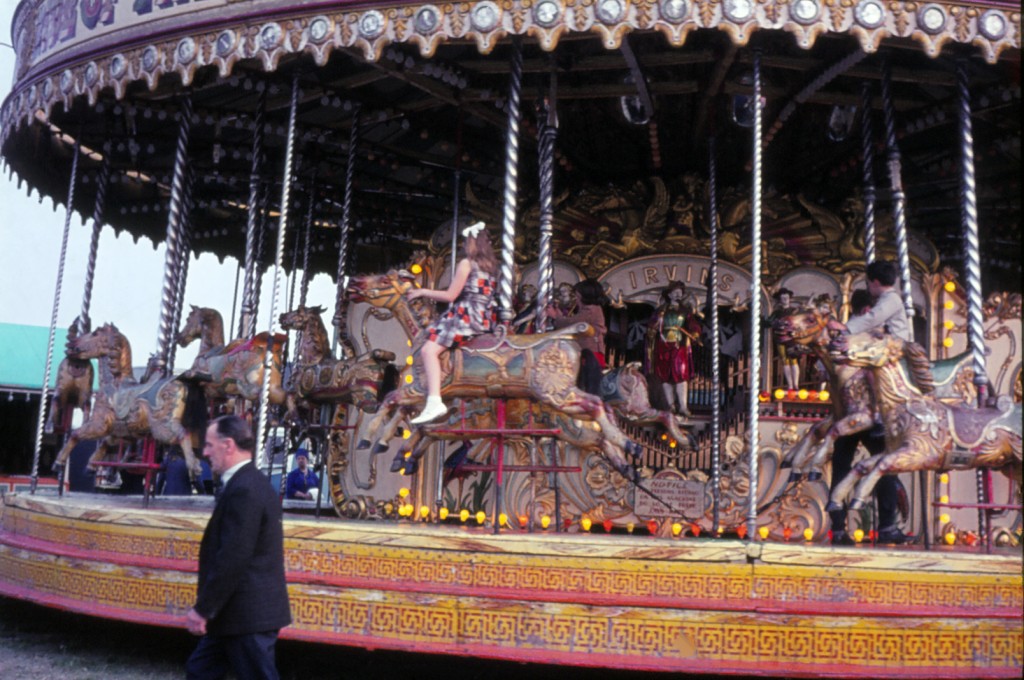
Ghost Train/Tunnel Of Love
Both rides couldn’t be farther apart in what kind of reaction they set out to provide, yet both rides share the same method of eliciting emotions from participants. Both indoor amusement rides involve a willing customer or customers sitting stationary as they are led on a rail track through an experience, either scary or romantic. The Tunnel of Love as well as the Ghost Train, originally known as ‘Dark Ride’, were created during the 19th century. The rides were called ‘dark’ because in order to provide an atmosphere the customer must be plunged into pitch black, which also helped hide the visual tricks employed during the attraction! Log rides (involving sitting in a boat designed to look like a log) were also popular. The Pretzel Amusement Ride Company’s co-founder Leon Cassidy patented the ride in 1928. It was then brought to the fairgrounds in 1930 by the Blackpool Pleasure Beach. These two rides have been a staple of amusement parks and fairgrounds with advancements in technology over the years allowing more sophisticated thrills allowing more interaction and entertainment.
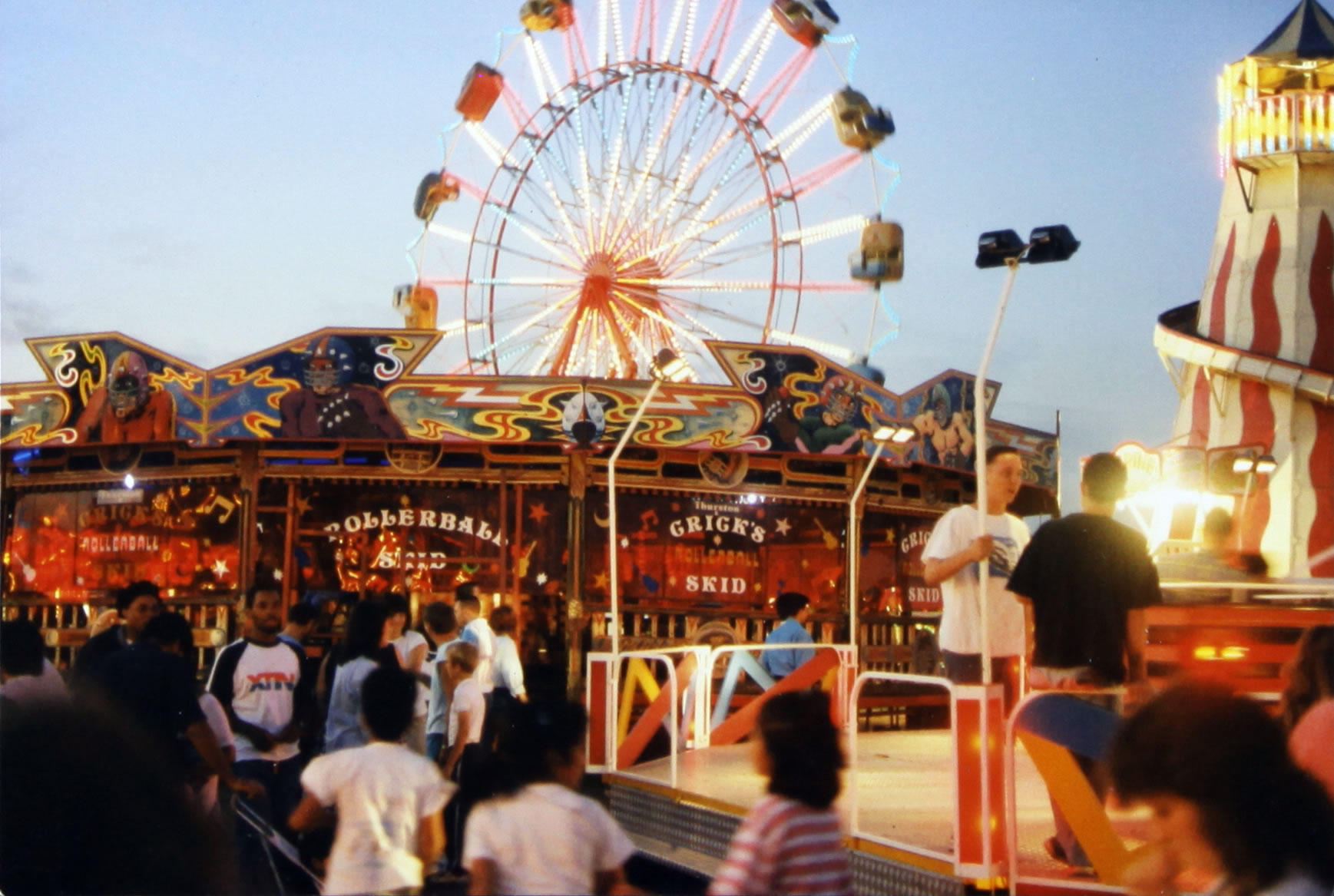
Ferris Wheels
Depending on who you ask, the first credited Ferris Wheel was thought to have debuted in Chicago at the 1893 World’s Columbian Exposition and built by George Washington Gale Ferris, Jr yet it may have been built a year earlier by William Somers who eventually filed a lawsuit against Ferris for patent infringement. The wheel may have been inspired by the ‘pleasure wheels’ designed back in 17th century Bulgaria. The wheel itself contains side carriages which can be entered and once the carriages are locked the wheel rotates slowly offering amazing views of the area to those whose carriage is closest to the top. A modern equivalent would be the London Eye, which has become undeniably popular with tourists. Over time every country has tried to best the other with the size of this ride with the largest wheel in the world in Dubai measuring at 820 ft tall to be opened in 2021.
Swing Boats
This Victorian attraction is also known as being a Pirate Ship ride. Swing Boats were most common during the earliest fairgrounds. The ride itself is a carriage in which a couple of people can sit inside. Riders control the motion and speed of the ‘boat’ through the air by pulling the rope attached. The Beamish Museum contains an example of this ride from the 1830s called the ‘Skylark’. Steam powered versions of the ride were introduced in the 1880s however as steam was eventually abandoned in favour of electricity recent versions of the ride are simply hand-powered as originally. While amusement parks and modern funfairs have seen the original ride largely ignored by the more advanced rides such as the Topple Tower and 2004’s Screamin’ Swing, the manually powered Swing Boats can still be seen at period fairs. They are well-loved as they are associated with nostalgia and a sense of classical fun.
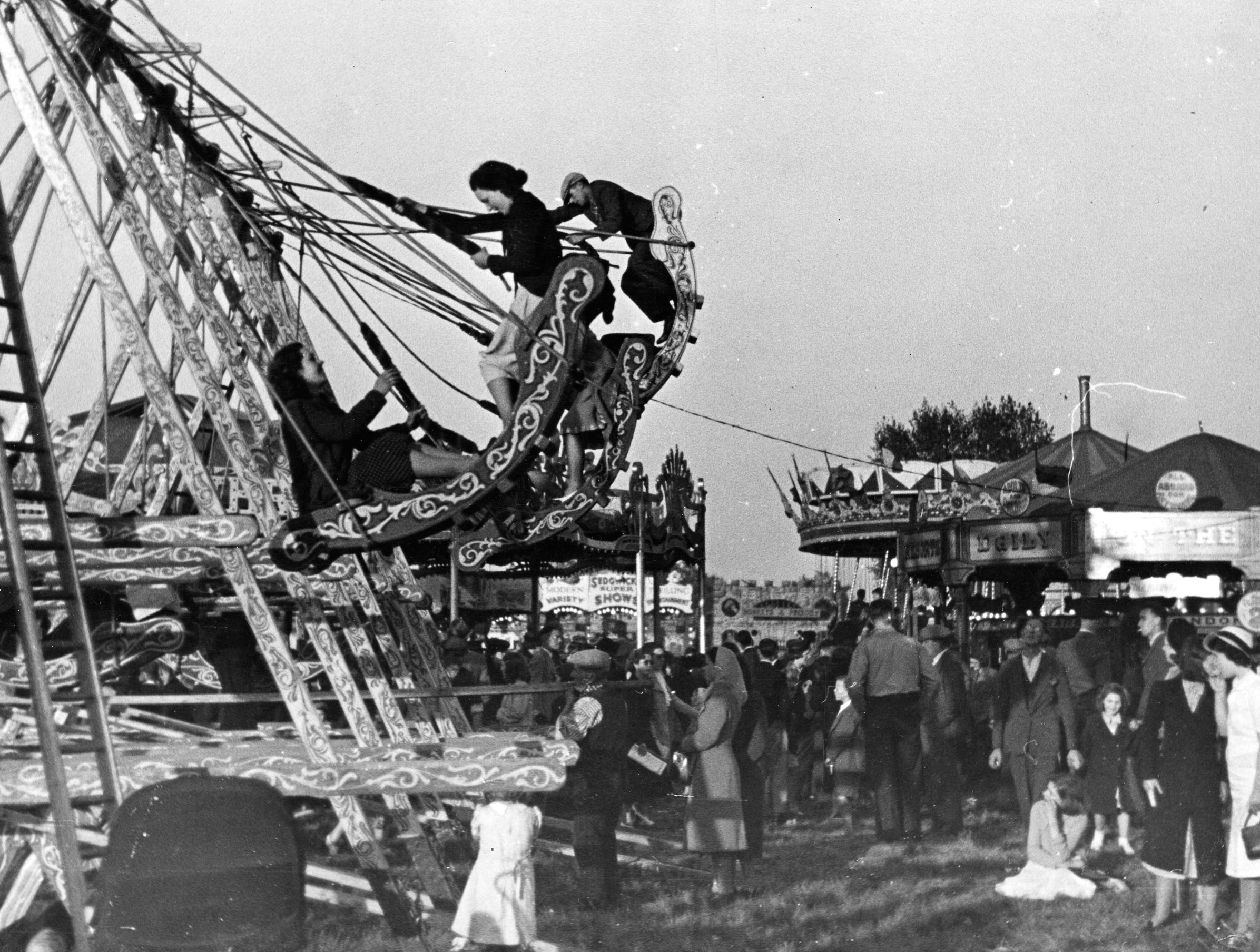
Roller Coasters
The origin of the Roller Coaster was inspired by two designs. The ride dates back to the 17th century St. Petersburg where the Russian Mountains were built; winter sled rides where the sleds sped out at 200 feet on a track. The other source of inspiration was in 1827 when a Pennsylvanian mining company constructed a “gravity railroad” in 1827 to move coal which sometimes was used for entertainment. It was perhaps developments by John Miller in 1919 that finalised the general design which ended up being used over the next decade in amusement parks and fairs. The Roller Coaster is often seen as the ultimate attraction at a fairground as it offers thrills and excitement at high speed. Safety has always been a big concern and some incidents resulting in fatalities have occurred. Criticism here seems to be directed more at the extreme types of Roller Coasters. As time has progressed there have been many variations of this ride. Architects have found new ways of moving a rider along a track by how their body is positioned on the ride as well as removing the floor of carriages to make a floorless Roller Coaster. The popularity of this ride cannot be denied and no doubt time will see even greater attempts to amaze audiences brave enough to take part.
Rideable miniature railway
One of the best advancements, when steam began to be used, was riding a mini-train on a track. Not to be confused with a model railway this was a to scale working prop train with only partial build and functionality of a real train. A track was laid out and people of all ages could travel across the limited route that had been laid out. The miniature railway track was of course portable to allow it to be taken apart and transported easily with the funfair.
GAMES OF LUCK/CHANCE
Attractions would also include games of chance or skill. Prizes would be handed out for winning a game, prizes like a cuddly toy or originally a goldfish in a small plastic bag of water. The latter was discontinued because of concerns over animal welfare. A selection of these games included:
Coconut Shy
One of the earliest fairground games, it involves throwing a ball at coconuts that are each balanced on a row of posts – knock enough coconuts down and win a prize. It is thought the game itself originated with Kingston Upon Thames Pleasure Fair of 1867, although this origin is disputed by an official from the Showman’s Guild who says the game originated with the Cambridge Midsummer Fair – although cockerels were used as targets instead of coconuts!
Hit-The-Bell/Strongman Game
One of the most well known funfair games was a way for men (or women) to test their strength. The Strongman Game (also known as High Striker) consisted of a heavy base of metal with a tower and puck attached to a bell at the top. Customers would take it in turns to pick up a heavy mallet and hit the base as hard as they could. If the puck hit the bell the game was won. It was often thought that during the 1930’s the game equipment was rigged to fail in order to maximize profits from repeated attempts.
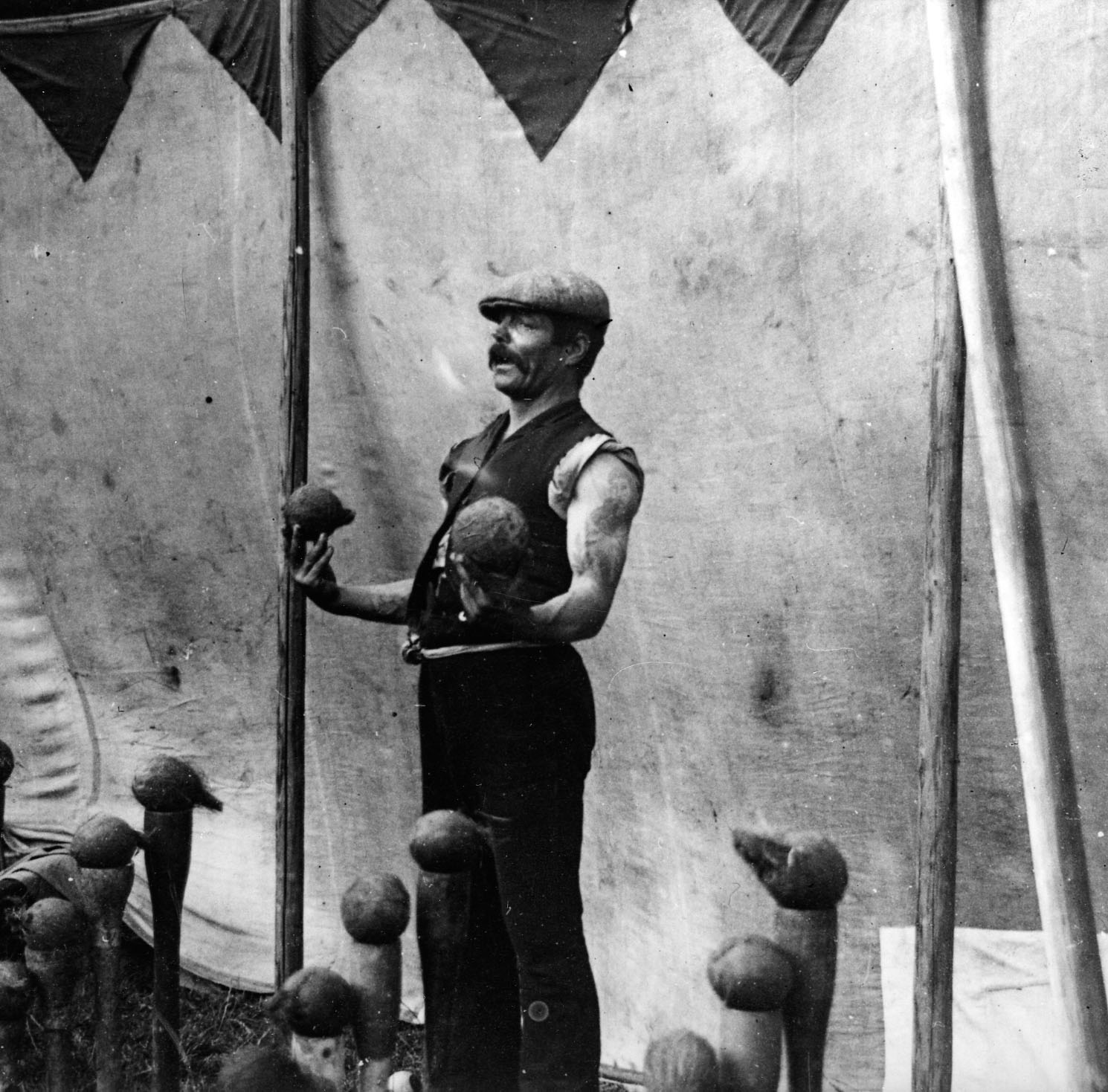
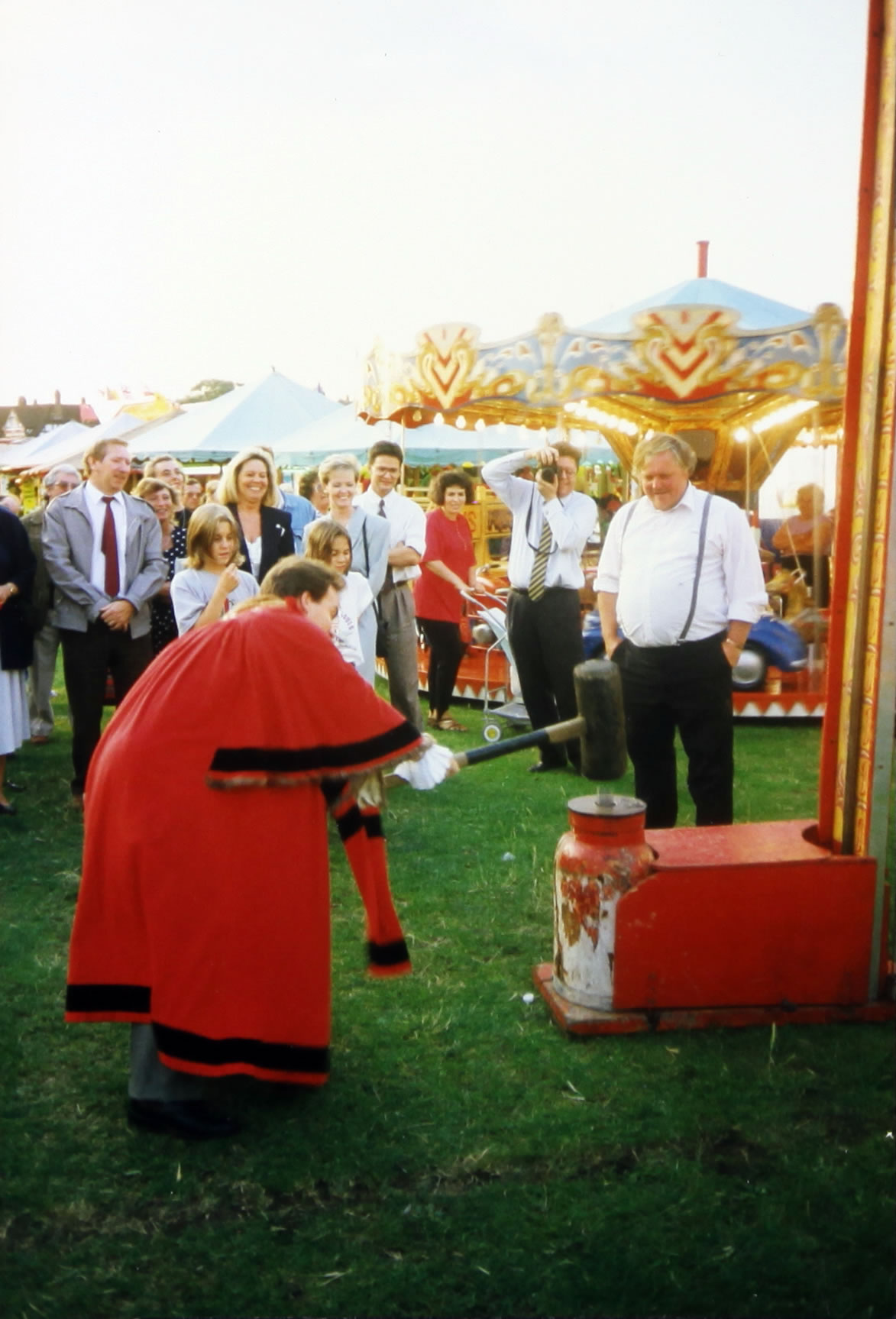
Crossbow Target Shooting Game
Similar to the Coconut Shy, this involved using a crossbow to shoot targets. Sometimes the crossbow was substituted with a bow and arrow for a game of archery.
Hoopla Stall
A game that involves throwing a hoop over an object from a distance (not as easy as it sounds).
Tin Can Alley
Dating back to the Victorian era, the game featured a row of tin cans on a table which the player had to shoot off using a rifle. Of course due to safety concerns, real rifles weren’t used. Instead, a toy rifle that shot corks or pellets was used. Modern technology later replaced these rifles with laser equipped ones that would hit a receiver on the can. Another version of this game got rid of the rifle and allowed the player to throw baseballs at the cans similar to playing a game of Coconut Shy.
FOOD STALLS
Food stalls offered a variety of food and beverages. Food would include pizza, hamburgers, chicken and hot dogs. Drinks would include tea, coffee, lemonade and soda. Here are some of the more notable food found at a fairground stand:
Caramel Toffee Apples
One popular treat found at fairgrounds is the Caramel Toffee Apple. The recipe for the Caramel Apple was thought of by Mrs. Edna Kastrup and in 1948 her family founded The Affy Tapple Company to distribute this sweet snack. The recipe involves dipping apples into hot caramel or toffee. Additional toppings can be added to it like nuts but once hardened this food is easy to transport which is why it became easy to sell at funfairs. Granny Smith apples seem to be the preferred type of apple to be used when making this treat.
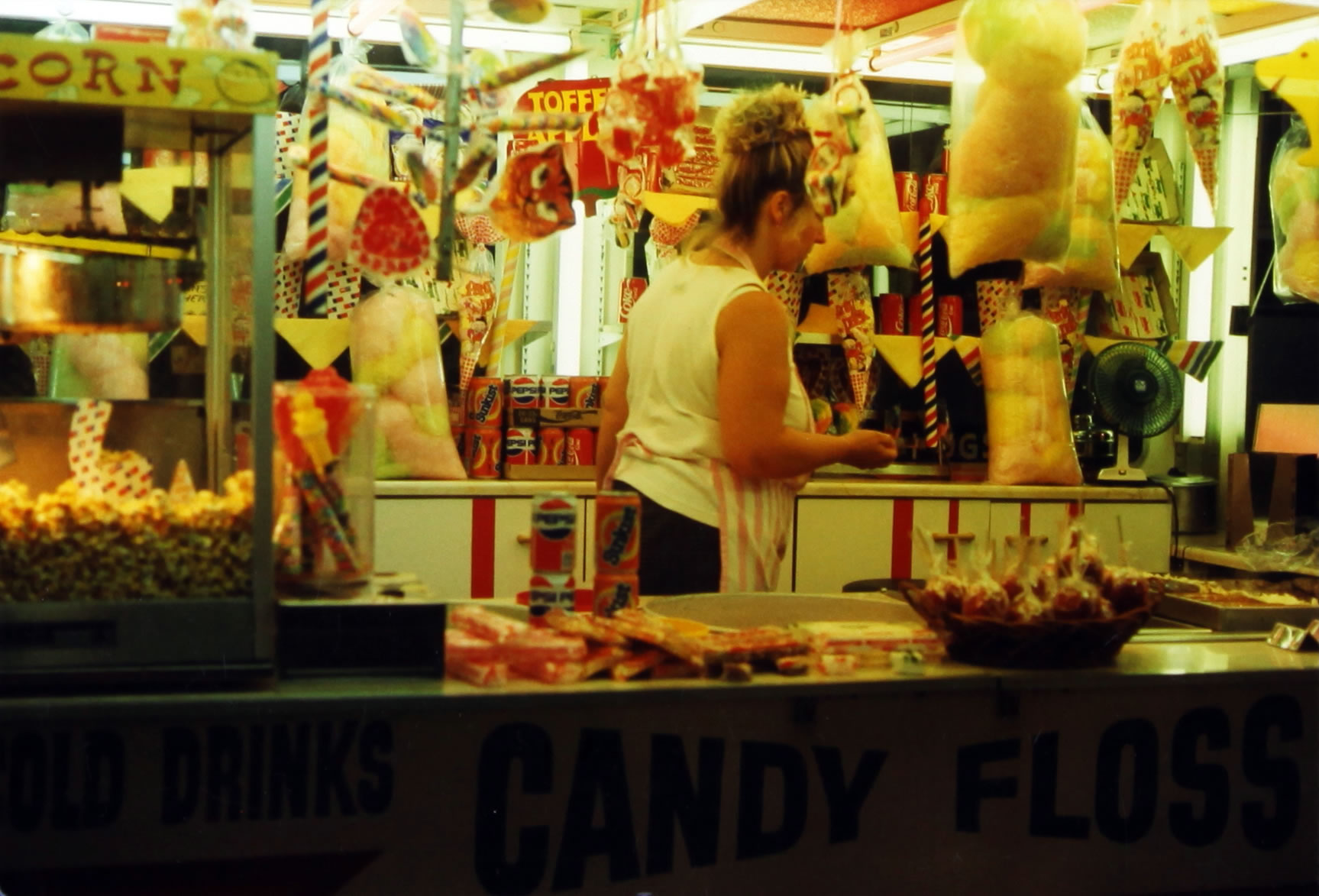
Candy Floss/Cotton Candy
Probably the most popular confection found at funfair stalls is Cotton Candy otherwise known as Candy Floss. This snack consists of flavoured and food coloured sugar-spun around through heat into strands that look like cotton hence the name. There is some confusion as to who created this confectionery treat. Some sources say it originated as far back as 15th century Italy, but the cost of sugar made the production of the snack too expensive.
The first recorded machine-spun Cotton Candy was by dentist William Morrison and confectioner John C. Wharton who introduced it to audiences at 1904’s World Fair. Understandably, it was a huge success. Others such as Albert D. Robinson in 1905 and another dentist Joseph Lascaux in 1921 have also claimed to have been the first to produce machine-spun candy. Due to its origins at fairs, it’s not hard to understand why Cotton Candy is most associated with these events. As a result of its heritage like popcorn Cotton Candy is always sold in an old Victorian-style food cart to remind visitors of the nostalgic magic of the funfair.
Popcorn
A staple of cinemas today, popcorn has a history that goes back much further. Popcorn as a snack really became prominent in the 1800s where corn was popped over a stove by hand. Steam-powered machines were later used for mass consumption. The food was very inexpensive and came in demand during the Great Depression when sugar-based snacks were in low quantities. There is no secret ingredient to popcorn: it’s corn kernels that are heated and either be topped with salt or sugar. Normally it is sold at stalls with Cotton Candy in an old Victorian-style food cart.
Ice Cream
This cold dessert treat needs no introduction. As fairs tend to keep a traditional approach in presentation (like Cotton Candy) 1930’s ice cream tricycles are often seen selling this.
Chips/Fries
An unhealthy but wonderful alternative to those that dislike sugar-based food. Stalls found at British funfairs tend to be as traditionally British as one can expect, with fish also on the menu!
Fried Dough
Most associated with Canadian cuisine, this snack consists of already risen yeast dough that is deep fried. This food can then have a variety of toppings added including sugar, cinnamon, maple syrup, butter, chocolate sauce, etc. According to Canadian historian Bill Castleman the name came from a quickly baked 19th century snack by people who camped out for the night.
Funnel Cake
This snack is popular at North American carnivals, however this delicacy has its roots in early Medieval Persia. Pennsylvania Dutch immigrants introduced the dish to America in the 19th century as Drechderkuche which with baking powder added to the mix was later developed in 1879 into what is now known as the ‘Funnel Cake’. The cake itself is a deep fried pastry with the batter poured through a funnel helping create its texture. This snack can then be topped with sugar, cinnamon, jam, or chocolate.
Mitcham Fair Rock
Micham Fair rock, similar to the sticks of rock found at the seaside, was a sticky treat made on-site and remembered by many, though caution was advised as it was very hard on the teeth!
SIDESHOWS
Funfairs held a sideshow as a point of interest to visitors. During days of trading what was once considered the primary reason to put on an exhibit (to sell goods) changed to become the main reason to visit a funfair which was social gatherings for entertainment. Changing tastes over the years saw some of these sideshows decline and disappear.
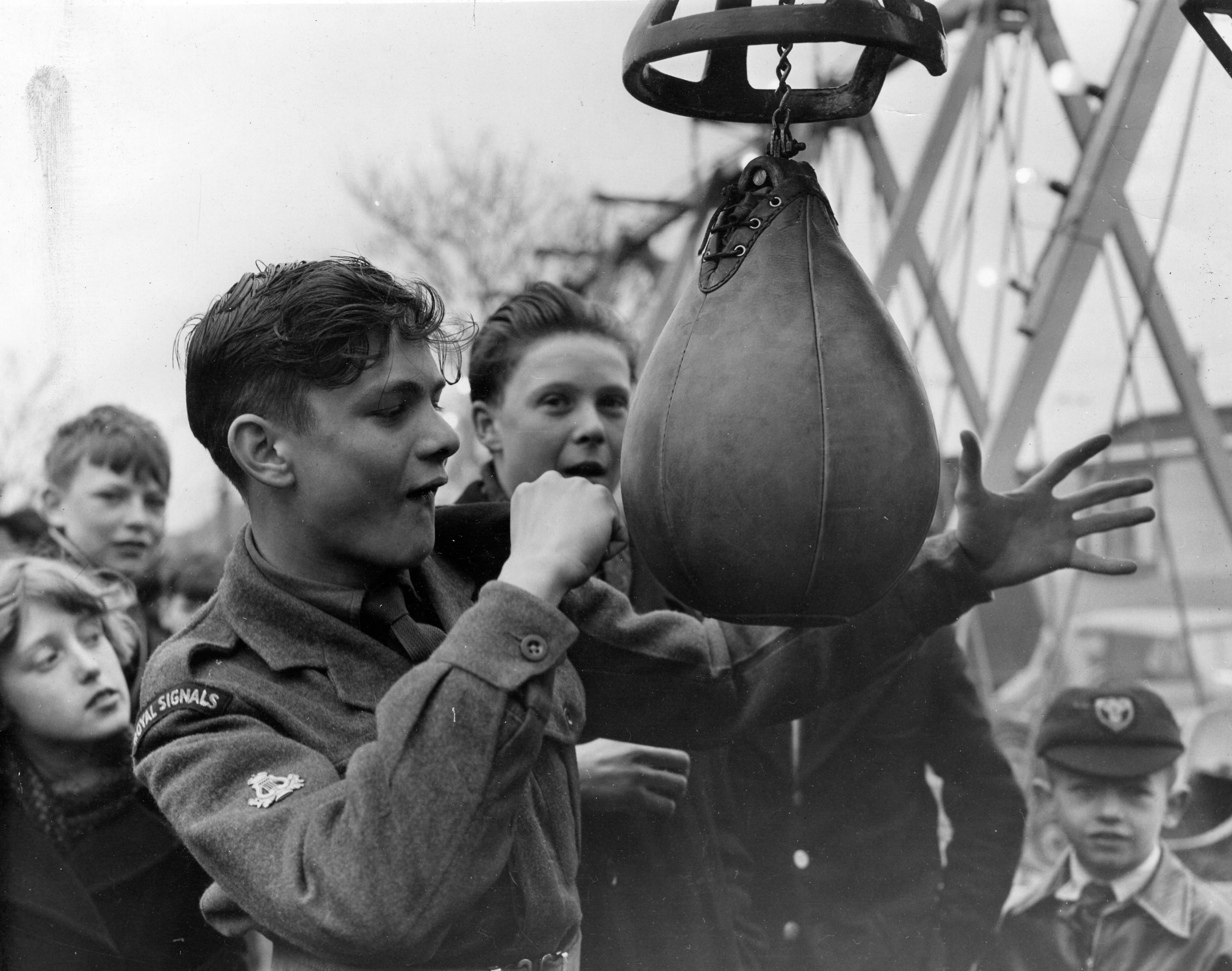
Boxing
Professional boxing booths began as far back as the 1800s, although bare-knuckle fighting had begun years before. Like any standard boxing match contestants entered a built-in ring to fight with each boxer signed up to tour with the fair. Challenges and tournaments were held. The most well-known became the Stewart family of boxers who had begun fighting in matches since World War I. As the years went by boxing fell out of favour due to concerns over violence. The last known boxing match in a fairground took place in 2009 with the Excelsior boxing tent.
Bouncy Castle
The Bouncy Castle otherwise known as an Inflatable Castle was first created by engineer John Scurlock in 1958 as an inflatable tent design. The design was modified by people like Bob Regehr in 1968 for carnivals. The plastic inflatable which was often a castle or a house became extremely popular with young children who could use the inflated object as a springboard. It was like jumping up and down on a bed yet these inflated objects offered more bounce. The Bouncy Castle was later extended and expanded to become more ambitious in its design.
Cinema
Adapting The Lumiere Brothers Moving Picture Projector, showmen would have installed in 1900 The Electric Bioscope Cinematograph Moving Picture Show. Customers would pay two to three pence to enter a tent (the auditorium) to watch girls dancing on stage to organ music while a projector would show a few minutes of film. The equipment was very unreliable and a threat to visitors as it often exploded when the shows were being run. Cinemas at fairs were ultimately phased out once nickelodeons became more prominent.
Stage Theatre
Up until the advent of portable cinema Stage Theatre was seen as the only way to bring fiction to fairs. Beginning in the 17th century stage performances had found their way into the fairs with actors entertaining the crowds who showed up to watch. Playwrights found the fairground a great way to compose drama and early on puppetry was often employed to tell stories without having to see the actors. The variety of productions saw theatre turn into not just about telling stories but presenting a variety of acts. By the 19th century the theatre of old had been replaced by the cinema spectacle and freak shows but while stage theatre is not popular in funfairs today it still has its place at exhibitions and in town squares.
Fire Eaters/Sword Swallowers
Two of the more dangerous attractions seen at a funfair, they are self-explanatory. However, various accidents have been reported in performers training to do these stunts. The stunts originally began in India and ancient China respectively.
Haunted House/Fun House-House Of Mirrors
Like the Ghost Train and Tunnel of Love, both the Haunted House and the Fun House serve to offer two very different experiences but both are designed to thrill visitors. The first Fun House was reported to have opened in the early 1900s at Coney Island. The typical Fun House was a building containing a number of mechanical devices to offer kids of all ages entertainment. The customers essentially walked in through the front door and were led to the end so it was a linear experience. Games could be played inside but going through the house was an experience all unto itself thanks to the level of interactivity it provided thanks to its purposely built weird design. One such oddity found inside was a Hall of Mirrors (otherwise known as a House of Mirrors); a collection of mirrors that allowed distorted reflections of visitors who stood in front of them. The Haunted House therefore derives from the Fun House as it is the same experience but with a different theme. The first recorded one was opened in 1915 Liphook, England as the Orton and Spooner Ghost House. Like the Fun House the popularity of both has endured over the years due to advancements in technology going some way to keeping the attractions fresh and exciting.
Wall Of Death
This was one of the more nerve racking rides to watch because unlike the other sideshows here this one had the opportunity to end the life of those daring enough to take part. The original Wall of Death was constructed back in 1928 and has always used a motorbike. The giant wall is circular and the aim of the stunt rider involves riding the motorbike around the wall without falling. It is one of the more uncommon spectacles seen at a fair today.
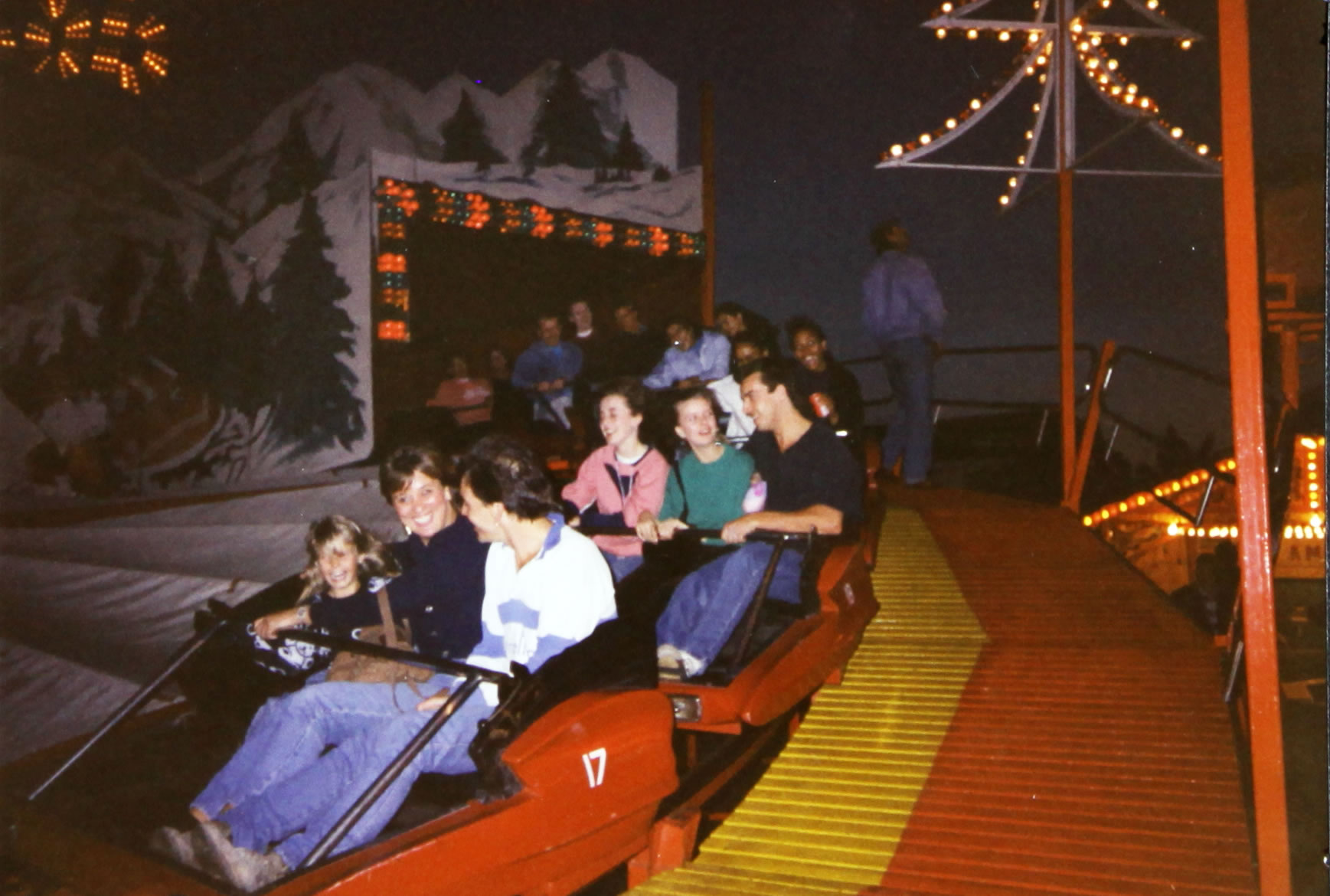
NEWER ATTRACTIONS
Technological advancements have allowed the experiences of the fair to adapt to modern times while still retaining the excitement we expect. Here are just a few examples of attractions over the years that show what the future of fairgrounds can bring when entertainment technology is pushed.
Twister/Tornado/Scrambler
This spinning ride was invented by Richard Harris of Georgia in 1938 at Lakewood Fairgrounds. The design was acquired by Eli Bridge Company which was then produced in the UK in 1959. The ride has had many variations but they all involve somebody sitting inside a carriage which is connected to a central beam. The carriages are then spun with the riders while the ride itself spins in the opposite direction thereby having a spinning motion along two separate axes. As families request better entertainment the ride is continuously redesigned over the years for more spectacular thrills.
Ice Rink
Ice Rinks have proven popular, especially around Christmas and Winter Wonderland but over the years it’s been possible to bring ice skating to fairs. Companies such as Irvin Leisure have created portable Ice Rinks to be installed at fairs. They come in various sizes, although according to their website the overall size they offer is mainly 30m by 14m.
Pendulum Ride/Booster
The Pendulum Ride works much like the Swing Boats in that it bases its motion on a fixed pendulum with the ride consisting of a gondola, arm, and an axle. It’s a swing with a counterweight on one side propelling a gondola on the other side upwards at a fast speed. The ride is based on NASA astronaut training equipment as well as what was used to test fighter pilots during World War I. It’s an extreme ride for sure, as people are flipped at least 100 metres off the ground at 3.5G force. The ride has proven exciting enough that variations of the Pendulum have appeared under such names as the Booster and Frisbee.
Skyfall
One of the fairgrounds’ newer attractions, Skyfall, is a zip wire adventure experience. It’s a scary but thrilling ride whereby a person glides from a great height to the ground along a wire with the rider strapped into a harness for protection. The zipline distance can be anywhere between 120 to 220 feet in length with the maximum speed being 21mph. Skyfall was specifically designed for amusement parks and fairgrounds so the advanced zip wire technology allows good safety for the customer while providing the latest in exciting entertainment.
The funfair appears to have a bright, happy future. This article of course cannot cover everything to do with funfairs, or Mitcham Fair specifically, due to the scope of history and entertainment available, however for those who are interested in learning more,these links are ones I highly recommend:
http://www.circus-entertainer.co.uk/heritage.htm
https://pastview-assets.s3-eu-west-1.amazonaws.com/org/8/other/PDFs/Mitcham%20Fair%20Display1.pdf
https://pastview-assets.s3-eu-west-1.amazonaws.com/org/8/other/PDFs/Fairground%20memories.pdf
https://www.exploringsurreyspast.org.uk/themes/subjects/fairgrounds/sources/
https://www.irvinleisure.co.uk/rides-for-hire/
https://en.wikipedia.org/wiki/List_of_amusement_rides
https://www.youtube.com/watch?v=qz1jZL_sD6o
https://www.youtube.com/watch?v=UVl1-0WVY9M
https://www.fairgroundsociety.com/
https://www.sheffield.ac.uk/nfca/index
